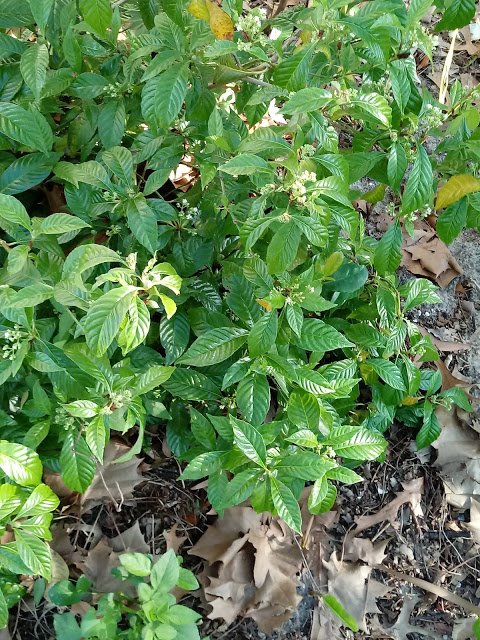Gardening in Florida can be a challenge, especially when it comes to managing sandy soil. The hot and humid summers can make it difficult to keep plants healthy and thriving. However, with the right techniques and tools, it is possible to manage a sandy garden through the summer in Florida. In this blog post, we will discuss some tips and tricks for managing a sandy garden in Florida during the summer months.
Watering
One of the biggest challenges of gardening in sandy soil is the need for frequent watering. Sandy soil drains quickly, which means that plants can dry out quickly in the hot Florida sun. To combat this, it is important to water your garden frequently, especially during the summer months. However, it is important to avoid overwatering, as this can lead to root rot and other issues. A good rule of thumb is to water deeply once or twice a week, rather than watering lightly every day.
One day not long ago I was talking with the young man who runs the community garden at one of the local churches. He had stated that they were shutting down the garden for the three months of summer in order to solarize it, which is a common practice here in the south. My first question for him was how they handle watering, since that i the biggest deal here during the dry season and the summer, and he at first raised up his hand as if to describe overhead sprinkling but then he looked down and ashamed admitted that he was hand watering daily, which is another common gardening practice here in the heat. Interestingly, he also told me that they are using alpaca manure for their garden.
Fertilizing
Sandy soil is notorious for leaching nutrients quickly, which means that plants grown in sandy soil need to be fertilized more frequently than those grown in other types of soil. However, it is important to avoid over-fertilizing, as this can lead to runoff and pollution of Florida’s shallow aquifers. Organic fertilizers, such as compost and animal manure, are a good choice for sandy soil, as they release their nutrients slowly over time. It is also important to have your soil tested regularly to ensure that you are not over-fertilizing.
Mulching
Mulching is an important technique for managing a sandy garden in Florida. Mulch helps to retain moisture in the soil, which can help to reduce the need for frequent watering. It also helps to suppress weeds and regulate soil temperature. Organic mulches, such as wood chips, straw, and leaves, are a good choice for sandy soil, as they break down slowly and add organic matter to the soil. It is important to avoid using inorganic mulches, such as plastic, as these can trap heat and lead to overheating of the soil.
Composting
Composting is another important technique for managing a sandy garden in Florida. Compost helps to add organic matter to the soil, which can improve soil structure and water-holding capacity. It also helps to introduce beneficial microorganisms to the soil, which can help to break down organic matter and release nutrients. Composting can be done using a variety of materials, including kitchen scraps, yard waste, and animal manure. It is important to avoid adding meat, dairy, and oily foods to your compost, as these can attract pests and slow down the composting process.
Choosing the Right Plants
Choosing the right plants is key to managing a sandy garden in Florida. Plants that are adapted to sandy soil and hot, humid conditions are more likely to thrive in a sandy garden. Some good choices for a sandy garden in Florida include:
Beach sunflower (Helianthus debilis)
Blanket flower (Gaillardia pulchella)
Firebush (Hamelia patens)
Saw palmetto (Serenoa repens)
Spanish bayonet (Yucca aloifolia)
Wild coffee (Psychotria nervosa)
Some excellent edible perennials for your sandy permaculture garden include:
Loquat
Mulberry
Spiderwort
Taro
Moringa
Ginger species
Tropical and swamp sage
Soil Amendments
Soil amendments can also be used to improve the quality of sandy soil in a Florida garden. Adding organic matter, such as compost and animal manure, can help to improve soil structure and water-holding capacity. Adding lime can help to raise the pH of acidic soil, while adding sulfur can help to lower the pH of alkaline soil. It is important to have your soil tested regularly to determine which amendments are needed.
Raised Beds
Raised beds are another option for managing a sandy garden in Florida. Raised beds allow you to create a custom soil mix that is tailored to the needs of your plants. They also help to improve drainage and reduce the need for frequent watering. Raised beds can be made using a variety of materials, including wood, concrete blocks, and recycled plastic. It is important to choose a material that is durable and will not leach harmful chemicals into the soil.
Sunken Beds and Wicking Beds
We will be posting more in depth about these two topics. Here at Eat The Sand we grow most food crops in wicking beds and Bare Gray Sand, using the above mentioned techniques.
Note that things like high tunnels exist but are not mentioned here, because they are expensive and are rarely used. All non-permanent construction in Florida has a tendency to be destroyed by storms.
In conclusion, managing a sandy garden in Florida during the summer months can be a challenge, but it is not impossible. By following these tips and tricks, you can create a healthy and thriving garden that will provide you with fresh produce and beautiful flowers all summer long. Remember to water deeply, fertilize wisely, mulch regularly, compost your waste, choose the right plants, consider raised beds, and use soil amendments as needed. With a little bit of effort and patience, you can create a beautiful and productive garden in even the sandiest of soils.
